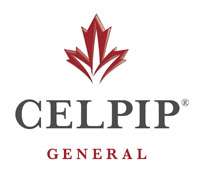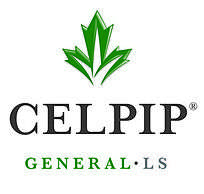Canadian English Language Proficiency Index Program
The Canadian English Language Proficiency Index Program, or CELPIP (/ˈsɛlpɪp/), is an English language assessment tool which measures listening, reading, writing, and speaking skills. The test is administered by Paragon Testing Enterprises.,[1] a subsidiary of the University of British Columbia (UBC). Paragon is the only Canadian company delivering Immigration, Refugees and Citizenship Canada (IRCC) designated English proficiency tests.[2] The CELPIP test is offered in two versions, CELPIP-General, and CELPIP-General LS.
CELPIP-General is suitable for people who need proof of English-language skills when applying for permanent resident status in Canada under the Federal Skilled Worker Program (FSWP), Federal Skilled Trades Program (FSTP), Canadian Experience Class (CEC), Start-up Visa Program, and various Provincial Nominee Programs, or for employment. Immigration, Refugees and Citizenship Canada has two approved English language tests: CELPIP-General and IELTS General Training Test: International English Language Testing System.[3][4]
CELPIP-General LS is suitable for people who need proof of listening and speaking proficiency for Canadian citizenship. The CELPIP-General LS Test is accepted by IRCC as one of only two designated English language for Canadian citizenship.[5]
In June 2015, with the acquisition of the Canadian Academic English Language (CAEL) Assessment, Paragon Testing Enterprises retired the CELPIP-Academic Test.
CELPIP Test Types

CELPIP-General
The CELPIP-General Test assesses a general level of English-language proficiency. The CELPIP-General Test is accepted as proof of English language proficiency for those applying for Canadian Permanent Residency and to the Association of Saskatchewan REALTORS (ASR).
The forms of identification that are acceptable for CELPIP-General test registrations are:
- a Passport Booklet
- Refugee Protection Claimant Document*
- Travel Document*
*Refugee Protection Claimant Documents and Travel Documents must be preapproved by Paragon Testing Enterprises. Refugee Protection Claimant Documents and Travel Documents that are not preapproved will not be accepted on test day.[6]
CELPIP-General LS

The CELPIP-General LS Test assesses a general level of English-language proficiency. The CELPIP-General LS Test is accepted by Immigration, Refugees and Citizenship Canada (IRCC) as a measure of listening and speaking proficiency for those applying for Canadian citizenship.
In June 2015, Immigration, Refugees and Citizenship Canada (IRCC) implemented the remaining changes to the Citizenship Act. One important change is that applicants between the ages of 14 and 64 must now meet basic language requirements in listening and speaking in English or French. For minors who are between the ages of 14 and 17, registrations for the CELPIP-General LS Test are accepted.[7]
The forms of identification that are acceptable for CELPIP-General LS test registrations are:
- Passport Booklet
- Canadian Permanent Resident Card
- Travel Document*
*Refugee Protection Claimant Documents and Travel Documents must be preapproved by Paragon Testing Enterprises. Refugee Protection Claimant Documents and Travel Documents that are not preapproved may not be accepted on test day.[8]
Test Format
CELPIP-General
The test is completely computer-delivered, and consists of four sections: listening, reading, and writing and speaking.[9] The Listening component is composed of eight parts, but only seven parts will be given during the test. The test taker will not be informed which part is to be omitted.The unscored items in the Reading and Listening section are used for test development. These unscored items can be found anywhere within the component and the test taker will not know which items will be unscored.[10] The total length of all four sections is 180 minutes.
| Test Component | Time Allotted | Number
of Questions |
Component Sections |
|---|---|---|---|
| Listening | 47 minutes | 2 | Practice Test |
| 8 | Part 1: Listening to Problem Solving | ||
| 5 | Part 2: Listening to a Daily Life Conversation | ||
| 6 | Part 3: Listening for Information | ||
| 5 | Part 4: Listening to a News Item | ||
| 8 | Part 5: Listening to a Discussion | ||
| 6 | Part 6: Listening to Viewpoints | ||
| 5–8 | Part 7: Unscored Items | ||
| Reading | 60 minutes | 11 | Part 1: Reading Correspondence |
| 8 | Part 2: Reading to Apply a Diagram | ||
| 9 | Part 3: Reading for Information | ||
| 10 | Part 4: Reading for Viewpoints | ||
| 8–11 | Part 7: Unscored Items | ||
| Writing | 53 minutes | 1 | Task 1: Writing an Email |
| 1 | Task 2: Responding to Survey Questions | ||
| Speaking | 20 minutes | 1 | Practice Task |
| 1 | Task 1: Giving Advice | ||
| 1 | Task 2: Talking about a Personal Experience | ||
| 1 | Task 3: Describing a Scene | ||
| 1 | Task 4: Making Predictions | ||
| 1 | Task 5: Comparing and Persuading | ||
| 1 | Task 6: Dealing with a Difficult Situation | ||
| 1 | Task 7: Expressing Opinions | ||
| 1 | Task 8: Describing an Unusual Situation |
CELPIP-General LS
The test is computer-based, and made up of two sections: listening and speaking.[11] The Listening component is composed of eight Listening parts, but only seven parts will be given during the test. The test taker will not be informed which part is to be omitted.
The total length of all two sections is 67 minutes.
| Test Component | Time Allotted | Number
of Questions |
Component Sections |
|---|---|---|---|
| Listening | 47 minutes | 2 | Part 1: Identifying Similar Meanings |
| 8 | Part 2: Answering Questions | ||
| 5 | Part 3: Listening to Problem Solving | ||
| 6 | Part 4: Listening to a Daily Life Conversation | ||
| 5 | Part 5: Listening for Information | ||
| 8 | Part 6: Listening to a News Item | ||
| 6 | Part 7: Listening to a Discussion | ||
| 5-8 | Part 8: Listening to Viewpoints | ||
| Speaking | 20 minutes | 1 | Task 0: Practice Task |
| 1 | Task 1: Giving Advice | ||
| 1 | Task 2: Talking about a Personal Experience | ||
| 1 | Task 3: Describing a Scene | ||
| 1 | Task 4: Making Predictions | ||
| 1 | Task 5: Comparing and Persuading | ||
| 1 | Task 6: Dealing with a Difficult Situation | ||
| 1 | Task 7: Expressing Opinions | ||
| 1 | Task 8: Describing an Unusual Situation |
Scoring
Scores are released 8 business days online after the test taker's test date. Two hard copies of the Official CELPIP Score Report are then sent out with Canada Post Regular Mail.
Express Rating scores are released in the test taker's CELPIP account 3 business days after their test date. Express Rating is available, with an extra fee, for the CELPIP-General Test and the CELPIP-General LS Test. Hardcopies of the CELPIP Official Score Report are sent through Canada Post Express Post [12]
The format and scoring of the CELPIP-General Test and the CELPIP-General LS Test are referenced to the Canadian Language Benchmarks (CLB). Below are the proficiency score levels and their CLB equivalents:[13]
| CELPIP Level | CELPIP Descriptor | CLB Level |
|---|---|---|
| 12 | Advanced proficiency in workplace and community contexts | 12 |
| 11 | Advanced proficiency in workplace and community contexts | 11 |
| 10 | Highly effective proficiency in workplace and community contexts | 10 |
| 9 | Effective proficiency in workplace and community contexts | 9 |
| 8 | Good proficiency in workplace and community contexts | 8 |
| 7 | Adequate proficiency in workplace and community contexts | 7 |
| 6 | Developing proficiency in workplace and community contexts | 6 |
| 5 | Acquiring proficiency in workplace and community contexts | 5 |
| 4 | Adequate proficiency for daily life activities | 4 |
| 3 | Some proficiency in limited contexts | 3 |
| M | Minimal proficiency or insufficient information to assess | 0, 1, 2 |
Unlike on the IELTS, there are no half-band scores allotted[14]. Band scores are only reported in increments of 1.
Test Centre Locations
There are over 33 testing centres across Canada in addition to one test center in United Arab Emirates. However, CELPIP Test sittings are currently only available in Canada and United Arab Emirates, Dubai. For a full list of locations, please click here.
Exam Preparation Resources
One can prepare for the exam by taking free sample tests available through CELPIP's online portal. Alternatively, Paragon provides an opportunity to take a sample test in a real testing centre environment to all prospective test-takers. Among other resources, Paragon produces a wide selection of study materials for each module of the test and also conducts CELPIP Speaking Pro sessions online. Finally, independent schools around the world offer exam preparation programs to familiarize test-takers with the exam format and help improve their level of English language.
Schools that offer CELPIP preparation program:
- Ashton College
- Canada College of Education
- Europa Language School
- CELPIP Expert
- Hansa Language Centre
- Vancouver TESOL Training Center
- Optimus Language Solutions
See also
Notes
- "English Language Tests". www.paragontesting.ca. Retrieved 2015-09-23.
- "CELPIP Preparation Program - CELPIPTest.ca". CELPIPTest.ca. Retrieved 2016-06-08.
- "Where can I take a third-party language test for my immigration application?". www.cic.gc.ca. Retrieved 2015-10-01.
- "Do I need a language test to immigrate to Canada?". www.cic.gc.ca. Retrieved 2015-10-01.
- "Acceptable language proof to apply for citizenship wizard". www.cic.gc.ca. Archived from the original on 2015-09-25. Retrieved 2015-09-23.
- "CELPIPTest.ca". CELPIPTest.ca. Retrieved 2016-05-12.
- "Registration for Test Takers Under 18". CELPIPTest.ca. 2015-07-30. Archived from the original on 2016-09-17. Retrieved 2016-04-27.
- "CELPIPTest.ca". CELPIPTest.ca. Retrieved 2016-05-12.
- "CELPIP-General Test: Test Format and Scoring". www.celpiptest.ca. Archived from the original on 2015-09-25. Retrieved 2015-10-02.
- "CELPIPTest.ca". CELPIPTest.ca. Archived from the original on 2016-03-25. Retrieved 2016-04-14.
- "CELPIP-General LS Test Format and Scoring". www.celpiptest.ca. Archived from the original on 2015-09-25. Retrieved 2015-10-02.
- "CELPIPTest.ca". CELPIPTest.ca. Retrieved 2016-04-25.
- "CELPIP Levels and Descriptors". www.celpiptest.ca. Archived from the original on 2015-09-25. Retrieved 2015-09-23.
- "CELPIP vs IELTS - a detailed, in-depth analysis of the CELPIP and IELTS". 8777 IELTS. 2018-11-25. Retrieved 2019-01-16.
References
- "Becoming an Immigration Consultant." Immigration Consultants of Canada Regulatory Council. Web. 25 May 2012. <https://archive.is/20121217102317/https://www.iccrc-crcic.ca/students/becomingConsultant.cfm>.
- "Skilled Workers and Professionals - Selection Factor: Language." Citizenship and Immigration Canada. 23 Oct. 2010. Web. 25 May 2012. <http://www.cic.gc.ca/english/immigrate/skilled/language-testing.asp>.
- "English Proficiency Requirements." English Language Proficiency Requirements. The University of British Columbia. Web. 29 May 2012. <http://www.grad.ubc.ca/prospective-students/application-admission/english-proficiency-requirements>.
- "Canadian English Language Proficiency Index Program (CELPIP)." Citizenship and Immigration Canada. Citizenship and Immigration Canada, 20 Jan. 2009. Web. 29 May 2012. <http://www.cic.gc.ca/english/resources/manuals/bulletins/2009/ob094.asp>.
- "Test Format and Scoring." CELPIP Test - Academic. Paragon Testing Enterprises. Web. 29 May 2012. <https://web.archive.org/web/20120627195802/http://www.celpiptest.ca/celpip-academic/about-celpip-a/test-format-and-content/>.
- "Test Format and Scoring." CELPIP Test - General. Paragon Testing Enterprises. Web. 29 May 2012. <https://web.archive.org/web/20120618184736/http://www.celpiptest.ca/celpip-general/about-celpip-g/test-format-and-scoring/>.
- "About Paragon." Paragon Testing Enterprises. Web. 25 May 2012. <http://www.paragontesting.ca/about/>.
External links
- Official website

- Canadian English Language Proficiency Index Program on Facebook

- Canadian English Language Proficiency Index Program on Twitter

- Canadian English Language Proficiency Index Program's channel on YouTube
- UBC (University of British Columbia)
- IRCC (Immigration, Refugees and Citizenship Canada)